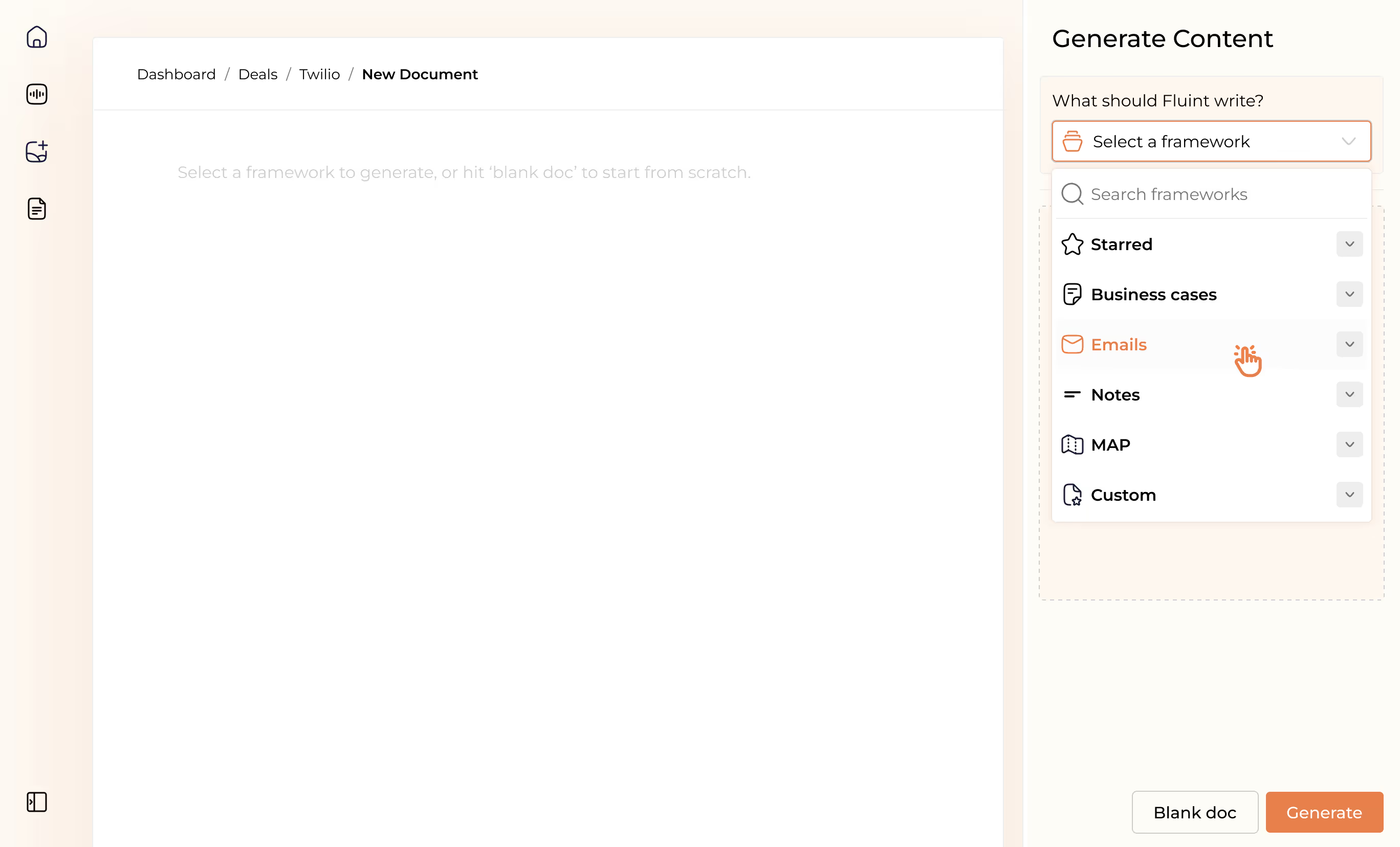The 4-Sentence Framework That Sells Complex Deals, Fast
TL;DR
- Complexity kills deals.
- Short, simple messages your buyers can remember and repeat internally is how you’ll get stuck deals moving again.
- The 4-Sentence Framework gives every deal a message that’s simple enough to travel: Because of [change] → Now’s the time to [approach] → So that [outcome] → Otherwise [risk].
If your buyers can’t remember and repeat your message during the meetings you’ll never be in the room for, that deal’s a lost cause.
Because enterprise sales is less like tennis (a back and forth between you, and one other person on the buying side). It’s more like building a relay team. Your story has to pass from you, to your champions, to their next contacts — and still make it across the finish line intact.
If that relay breaks down with any single person mid-race, you all lose.
Which is why complexity kills perfectly good deals all the time, and simplicity sells.
The 4-Sentence Soundbite
I created this framework as a way to help my sales teams message complex ideas fast, without losing any of the meaning or momentum when we pass it to our champions.
It’s the structure I use in every narrative I write. From business cases to demos, discovery calls to keynote decks.
When sellers compress the essence of a deal into four clean and connected sentences, each one acts like the next plank in a bridge. Carrying your message across to the customer.
For example, let’s say we’re selling the analytics software, Amplitude, to Spotify. Our soundbite might sound something like this:
- Because of audio's shift from à la carte ownership (e.g. Audible downloads) to bundled streaming credits:
- Now's the time to build discovery → play → complete funnels that identify groups of binge listeners most likely to pass the 15-hour audiobook limit.
- So that Spotify turns 5-10% more of its 433M casual listeners into Premium upgrades:
- While avoiding the high cost of paying out additional music royalties, vs. the more favorable margin on audiobook streaming.
To break that example down into its building blocks:
- Because of [a big, unaddressed change or shift].
Anchor your story in the buyer’s reality. Some type of new reality your buyers are grappling with. - Now’s the time to [follow a specific, recommended approach]
Identify the path forward, and what to do in light of the shift above. - If we do, [positive outcome].
Tie your recommendation back to the positive outcome you’ll create together, if they follow through. - If we don’t, [risk and growing costs ].
Contrast the positive with the negative outcome or increased risk they’ll avoid.
That’s the 4-sentence “arc” behind every winning story:
A change that creates urgency → an approach that’s unique → an outcome that matters → a negative that shows the contrast.
Soundbites Your Buyers Remember & Repeat
This framework works because it mirrors how we all remember and retell stories.
- Change and contrast is like honey for the human brain: it’s sticky.
- It’s simple and structured enough for multiple personas to connect with.
- We act when we understand cause and effect.
That’s the shape of every great story, ever told: change creates tension, and ends in one of two futures: comedy or tragedy.
It’s not just psychology, either; it’s physics:
Less clutter weighing down your message means it’s more likely to get to liftoff and “travel.” Which is a good thing. Because as your message gets forwarded, your deal finds new momentum, and you’re building new influence over the internal buying conversation.
That’s why when I’m writing (whether it’s this blog, a business case, or a chapter of Brief & Brilliant), I treat every word like it’s paying rent.
If it doesn’t earn its place, it’s gone.
How to Build Your Own Four-Sentence Soundbite
Try this exercise next time you’re preparing for a high-stakes or complex deal:
Step 1: Write “long” to get it all out.
Dump every idea, stat, customer quote into a page. Don’t filter anything, just get it out.
Step 2: Identify the change.
Ask: What’s changed? What’s different about your buyer’s world today, that wasn’t true yesterday, that’s got their full attention?
If you can’t name a change, you won’t build any urgency. Everything starts here.
Step 3: Define your approach.
What’s your way of solving the problem that feels both new and necessary? Something that only you can guide the buyer through, as a response to the change?
Step 4: Clarify the outcome
Connect to the core metric your buyer already tracks, and put specific numbers to it.
Step 5: Highlight the risk
End with what happens if they stay put. Not as a “fear play,” but as contrast to the positive.
Now, compress it all down.
Highlight any filler, jargon, and repetitive words in red. Then go through and delete the red, then repeat that a few times.
How to Cut the Chaos and Confusion in Enterprise Sales
When I think about a complex deal, I picture a message moving through a series of rooms — each one with different people sitting inside, who all have varying priorities, levels of context, and attention spans. At each new doorway:
- Every new stakeholder misses and forgets a small part of the message.
- Every layer of interpretation (a summary conversion, a paraphrased update, etc…) chips away at the meaning.
- Confusion grows and the cycle slows, creating space for competing priorities to take over.
But a story with a spine to it won’t bend when someone retells it. It stays intact while it gets passed from room to room. Cutting the game of telephone, and preventing deals from getting “stuck” mid-funnel.
Team Exercise:
Here’s a quick exercise you can run today:
- Have every rep on your team write out a deal’s 4-sentence soundbite.
- Share and compare. How unique do they sound?
- If the sentences all look like they’re written for a “persona” instead of a highly-specific deal, with numbers and names that only apply to that deal: they’ve got more work to do.
Craft Your Own Value Stories + Short Soundbites
Want more examples, templates, and real deal breakdowns using the 4-Sentence Framework?
👉 Dive deeper into the Soundbite frameworks and get more resources →
Inside, you’ll find:
- A deeper breakdown of the 4-sentence pattern
- Short business case templates you can use today
- How to simplify complex deal narratives for buying teams
Because once you can say it in four sentences, you can sell it anywhere.
FAQ’s On Building Brief & Brilliant Soundbites
Q: "This sounds great, but where do I actually start?"
Start with one deal and one framework. Pick your biggest active opportunity and write a 4-sentence soundbite for it. That's it. Score it honestly against the criteria in the book. The gaps you find will tell you exactly what questions to ask in your next customer meeting. Don't try to overhaul your entire process on day one.
Q: "Do I really need to write this down? Can't I just get better at talking through deals?"
Writing isn't documentation—it's discovery. You cannot think clearly about what you don't yet understand until you try to write it down. The act of writing reveals what you're missing. Plus, you can't be in every internal meeting where your deal gets decided. Your writing can be.
Q: "My champion won't edit my message. Does that mean they're not a real champion?"
Not necessarily. Maybe you're asking too early, maybe the document isn't good enough yet to earn their time, or maybe they need a different format. Try this: instead of sending a full doc, text them 3 bullet points and ask, "Which one's off?" That's easier to respond to, and you'll learn what needs fixing.
Q: "What if my champion says, 'Looks good!' but doesn't actually make any changes?"
That's a yellow flag, not a red one. They might genuinely agree, or they might be too busy to engage deeply. Test it: put something intentionally wrong or provocative in the next draft. If they catch it, you're good. If not, you need to go deeper in discovery or find additional champions.
Q: "The executive keeps saying they're interested but won't commit. How do I create urgency?"
You can't create urgency. You can only message urgency that already exists. If there's no critical event, no timeline, no consequence for inaction—you don't have urgency, you have a science project. Go back to discovery and find what's actually changing in their world that makes now different from six months ago.
Q: "Do I need AI to make this work?"
No. These frameworks worked before AI existed. But AI dramatically changes the economics. What used to be possible only on your top 5% of deals can now scale to 80%+ of your pipeline. It's the difference between treating every account like a key account (AI-enabled) versus reserving key account treatment for the lucky few (human-only).
Q: "Our buyers want detailed ROI models, not simple soundbites."
Your buyers want confidence, not complexity. The ROI model can be an appendix, but nobody reads 47-tab spreadsheets. They read the executive summary. If your one-page case or soundbite is compelling, they'll ask for supporting details. If it's not compelling, they won't read the detailed model anyway.
Q: "We tried something like this before and reps didn't adopt it."
Was it truly simple, or was it another thing piled on top of everything else? Did you measure adoption and impact separately? Did you start with one framework or roll out six at once? Most "failed" initiatives failed because of complexity, not because the underlying idea was wrong.
Q: "What about deals that just need transactional, product-led sales?"
Then don't use these frameworks. This book is explicitly about complex deals with multiple stakeholders, long cycles, and executive involvement. If your ACV is $5K and buying happens in two weeks, you don't need a business case. But if you have 5-11+ people involved in a decision, you do.
Q: "We lost a deal where we had great messaging. What happened?"
Messaging isn't everything—it's the foundation for everything. You might have lost because:
- Your message never reached the actual decision-makers
- You had good messaging but a weak champion
- Your differentiator wasn't strong enough to overcome price/incumbency
- The "critical event" you anchored to wasn't actually critical
Why stop now?
You’re on a roll. Keep reading related write-up’s:
Draft with one click, go from DIY, to done-with-you AI
Get an executive-ready business case in seconds, built with your buyer's words and our AI.

Meet the sellers simplifying complex deals
Loved by top performers from 500+ companies with over $250M in closed-won revenue, across 19,900 deals managed with Fluint

Now getting more call transcripts into the tool so I can do more of that 1-click goodness.



The buying team literally skipped entire steps in the decision process after seeing our champion lay out the value for them.


Which is what Fluint lets me do: enable my champions, by making it easy for them to sell what matters to them and impacts their role.





.png)



